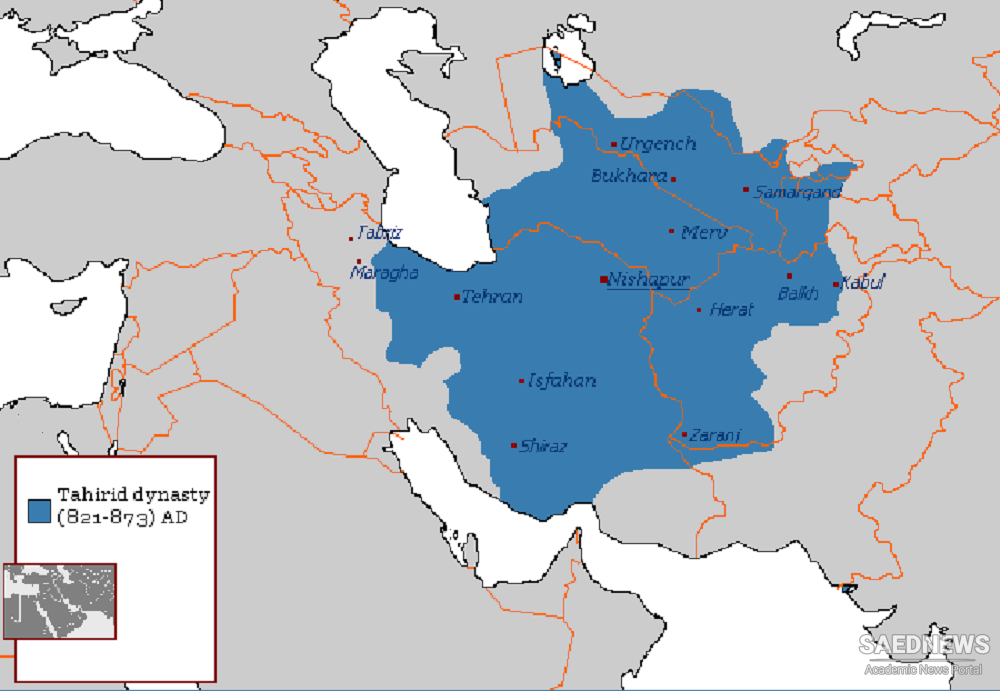During the 3rd/9th century, four generations of the Tahirid family succeeded each other hereditarily as governors for the 'Abbasid caliphs (205-59/821-73). The line is thus often considered as the first dynasty in the east to make itself autonomous of the caliphs in Iraq; their role in the dissolution of the political unity of the Islamic caliphate would, according to this view, correspond to the roles of the Aghlabid governors of Ifriqiya or Tunisia in the far west and of the Tulunids in Egypt and Syria. There are cogent objections to this view, both from the standpoints of constitutional theory and of the Tahirids' actual behaviour; in many ways, it is a misleading and superficial analysis of affairs. Yet it is probably true that the continuity in power of the Tahirids did favour the beginnings of a resurgence of Persian national feeling and culture, although Bertold Spuler is perhaps being unduly dogmatic when he remarks, concerning the succession of the first Tahirids in the governorship of Iran, "In theory, nothing essential had changed, but in practice, the first independent Muslim dynasty had been established on Iranian soil; the political rebirth of the Persian nation began." Previously, Khurasan had been economically and socially backward compared with the rest of Persia. It had endured a succession of governors sent out from Iraq, normally Arabs who had little concern for the enduring prosperity of the province; the turnover amongst governors was often rapid, providing a temptation to exploit one's charge and line one's pocket whilst opportunity permitted. The Tahirids were culturally highly Arabicized, but they were nevertheless Persians. The firm and generally just rule which they gave to the eastern Iranian world favoured a material and cultural progress, whereas earlier, the indigenous, older Iranian culture had been weakened by the dynamic impact of Islamic religion and Arab political dominance. The practical effects of these trends inaugurated by the Tahirids were seen somewhat later, in the governmental policies and cultural climate of succeeding dynasties - the Saffarids and Samanids in eastern Persia, the various Dailamite and Kurdish dynasties in the west - whose links with the 'Abbasid caliphate were perceptibly looser and whose respect for the constitutional theory that all political power was a delegation from the caliphs was much weaker.


 High Caliphate and Early Islamic Political Power in Middle East
High Caliphate and Early Islamic Political Power in Middle East














































